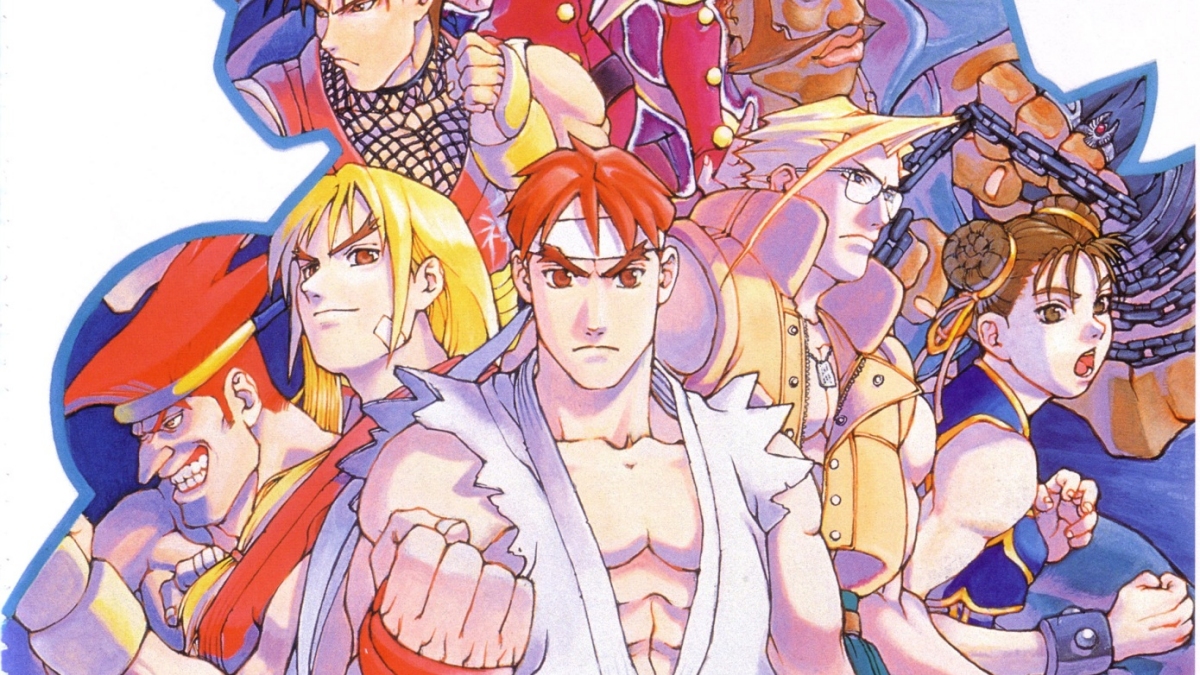When Street Fighter came out in 1987, there was no story to it. No more than your average sports game, really. There was a martial arts tournament, you could either play as the Japanese karate guy or the American karate guy, and the final boss was a tall dude with an eye patch. Even beating the game just gave you a generic congratulations.
1991’s Street Fighter II had more going on, and it gave us closure on how the first game ended (Ryu split open Sagat’s chest with a Shoryuken), but it didn’t have much real story to it. It was another fighting tournament, this time connected to a very vague plot involving world domination, but the focus was more on the characters than the overall plot. Generic guys like Joe and Retsu from the first game were replaced with better designed characters like Blanka and Zangief.
Not that they didn’t try to adapt Street Fighter II into a narrative. We got a manga, a short-lived American comic, an anime movie, an anime series, a live-action movie, and a Saturday morning cartoon. Not counting the live-action movie and its cartoon spinoff, the main conflict tended to boil down to Ryu vs. M. Bison, which always felt more like something out of a crossover story than anything else.
With what little plot Street Fighter had going on, it was split into two main stories: a drifter’s quest for self-realization through fighting and a science fiction crime lord’s attempts to take over the world. There were various characters going out of their way to find and defeat M. Bison, but Ryu was not one of them. Instead, most versions of the story had Bison interested in going after Ryu and forcing him to be a weapon in his plans.
With Street Fighter II’s success came a running gag about how Capcom refused to count to three. Rather than move to the next installment, Capcom instead rereleased several upgrades of Street Fighter II; a practice that’s continued up until 2017 with Ultra Street Fighter II for the Switch. After Super Street Fighter II: Turbo hit in 1994, it seemed Capcom was ready to move on and, indeed, they released a brand new Street Fighter game in 1995. It just wasn’t what anyone expected.
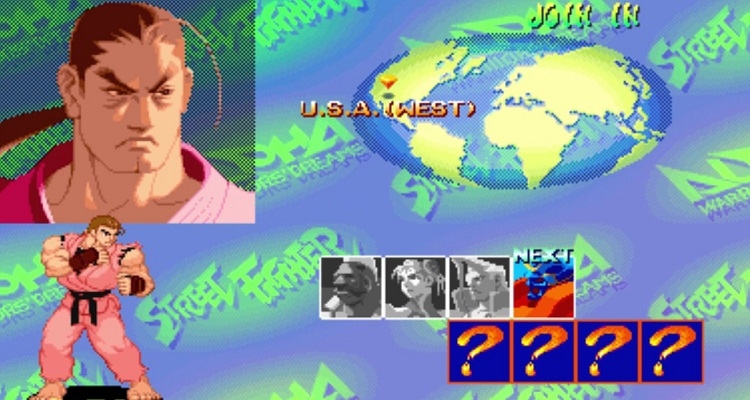
The Street Fighter Alpha Story
On June 5, 1995, Street Fighter Alpha: Warrior’s Dreams was released to arcades. Rather than tell the third chapter in the series, the game was more of a Street Fighter 1.5, not only bridging the gap between the two existing games, but also expanding on the Street Fighter world and even tying it into another classic arcade series.
In terms of gameplay, the changes were mostly minor. As Super Street Fighter II: Turbo added super meters, Street Fighter Alpha split it into three bars. It also added air-blocking, chain combos, and the ability to worm your way out of a throw and not endure the full damage. The bigger change was the look, which had a lighter, more colorful take on the designs.
The game featured eight matches in single player with ten readily available characters and three unlockable bosses. Not an impressive roster (especially since four characters are head-swaps of the same basic sprite set), but then again, it was what it was for a first attempt at an engine.
The narrative also felt extremely different despite being so simple. Rather than be based on a tournament happening, the basic story was that these various characters were just wandering around, meeting each other, and getting into fights. Even M. Bison wasn’t completely defined as the final boss. Certain characters went after different final targets, such as Ken facing Ryu or Adon facing Sagat.
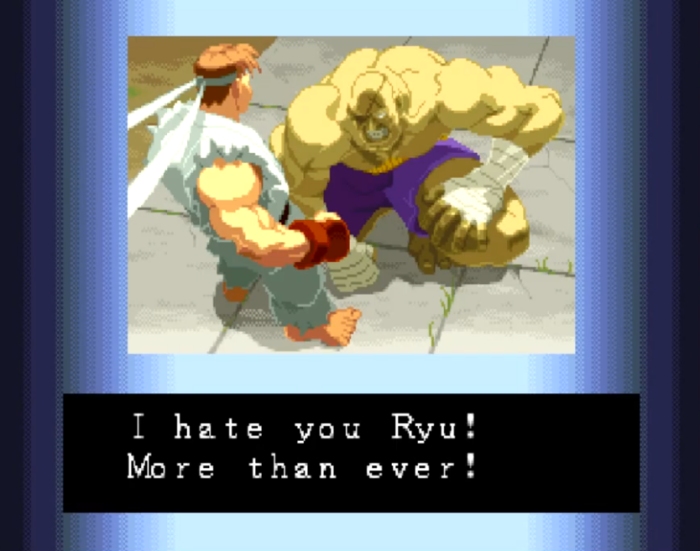
All in all, the cast revolved around three main things:
Following up on Ryu’s defeat over Sagat.
Ryu and Ken are continuing their rivalry as always, though Ryu dons a white headband instead of his iconic red one. As Ryu’s legend is starting to rise, Sagat’s dealing with his loss of face by obsessing over a rematch, while his former student Adon (penultimate boss from Street Fighter) feels disgust towards Sagat and wants to take his spot as the world’s greatest Muay Thai practitioner.
Speaking of Sagat losing face, we also meet Dan Hibiki. As SNK’s Art of Fighting gave us Ryu and Ken knockoffs Ryo and Robert, Capcom decided to poke some fun by putting Robert’s head on Ryo’s body, making his karate gi pink, and depicting him as a laughably shitty version of Ryu. Dan is the self-serious jobber of Street Fighter lore who wants to avenge his father’s death at the hands of Sagat. Dan’s father is the reason why Sagat lacks depth perception, you see.
The rise of M. Bison
The game borrows a lot from Street Fighter II: The Animated Movie, but the biggest inclusion is Bison’s design from that anime. Here, he’s a big, smiling, floating block of muscle with a love of teleportation. The game’s story uses the fact that he’s Street Fighter II’s boss as an excuse to give him crazy plot armor.
Chun-Li – wearing a skin-tight uniform instead of her classic dress – wants to bring him to justice. As does Charlie Nash, a man namedropped in Guile’s Street Fighter II ending as the man Guile is trying to avenge. In other words, Charlie is outright doomed. Rose is a mysterious fortune teller who seems to understand exactly what Bison actually is and wants to snuff him out before it’s too late. The vigilante ninja Guy is drawn to Bison so he can put an end to his evil.
Outside of Sagat, the only guy on Bison’s side is Birdie, another return from Street Fighter, albeit with a massive design overhaul. They even turn him black and have him explain himself as being sick and pale during the first game.
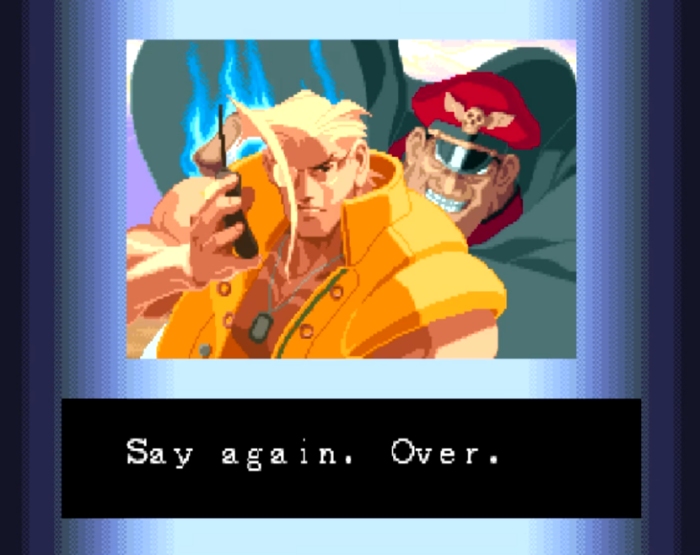
Not counting MAYBE Akuma’s ending, Bison can’t be stopped. Various endings show him surviving one way or another. He springs to life and hospitalizes Chun-Li. He gets to his feet and ambushes Charlie. Rose gives her all to stop him, but still hears a heartbeat. Guy leaves him for dead and Bison swears revenge. Even Dan and Adon’s endings involve them pissing off Bison and the insinuation was that he’ll probably kill them down the line.
After all, neither of them are in Street Fighter II. At the time, their fates were extremely open-ended.
Final Fight is part of Street Fighter canon.
Street Fighter Alpha brings in Guy, one of the heroes from the side-scrolling beat ’em up Final Fight. Joining him is Sodom, the second boss from said game. Not only does this connect the two series, but it also means that Saturday Night Slam Masters (which features Final Fight‘s Mike Haggar) is part of Street Fighter lore. It’s even canon that Birdie used to be in a tag team with Titanic Tim back in the day.
Street Fighter Alpha: Warrior’s Dreams lacked the big cultural footprint of Street Fighter II and its iterations. In the US, the only thing the game got shortly after release was a handful of cameos in the Street Fighter animated series. The first season had an episode where the heroes entered a fighting tournament (crazy, right?) and Birdie, Adon, Rose, Guy, and Sodom made appearances. You probably know the episode better for giving us M. Bison screaming, “YES!! YES!!”
More on that cartoon later.
The Street Fighter Alpha Manga
Masahiko Nakahira created a Street Fighter Alpha manga. It features a lot of interesting takes on its characters. Guy is considered a vigilante force of nature who can’t be stopped. Adon obsesses with fighting Ryu to the point that he goes on a killing spree, only to later break down from his loss of honor. Birdie and Ryu become good friends and Birdie tries to bring Ryu into his life of crime as a way to give him direction.
The main idea from the manga that sticks is the introduction of the Satsui no Hado, the Surge of Killing Intent. It’s explained that Ryu didn’t beat Sagat due to superior skill, but because he briefly became overcome with his mindless dark side and instinctively sucker-dragon-punched Sagat into oblivion. Ryu would spend the book struggling with his alter-ego and thus, the concept of Evil Ryu was created.
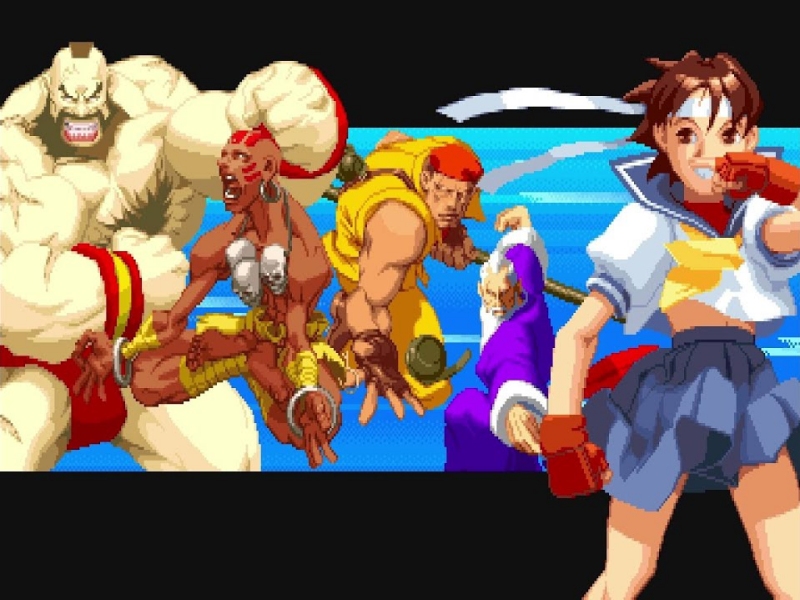
Street Fighter Alpha 2
On February 27, 1996, Capcom released Street Fighter Alpha 2. The game walked the line between being a sequel and an upgrade. It had the same cast, plus five more. The endings were different, albeit with a lot of the same basic events happening. The biggest change to the engine was the addition of the Custom Combo system. Otherwise, the most notable change was the new art and backgrounds.
With the added characters, they went with the same thought process as the first game. Zangief and Dhalsim were returning (preturning?) characters from Street Fighter II. Rolento from Final Fight joined the fray. Gen from the first Street Fighter got a redesign. This left one brand new character in Sakura Kasugano, a spirited schoolgirl who once saw Ryu fight and became obsessed with learning under him.
Bison remained an unstoppable rising force, but the game’s story started to put more of a light on Akuma. Ryu and Gen were both bent on finding and fighting Akuma and Adon’s ending had him pivot from wanting to best Sagat to wanting to best the bigger fish Akuma. This in turn emphasized Ryu’s Satsui no Hado self, since it’s the same force that powers Akuma. The threat in the air was that Ryu was possibly going to succumb to his inner demons and become the next Akuma, whether he wanted to or not.
Street Fighter Alpha 2 was an extremely polished upgrade and one of the most solid releases in the Street Fighter series. It would be two more years before a direct follow-up, but there were some notable releases tying into it in-between.
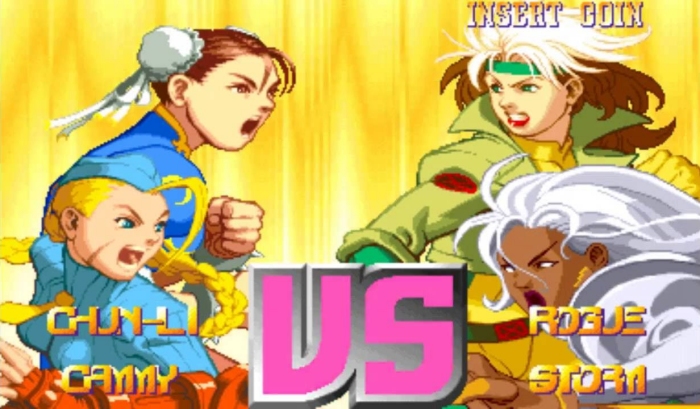
The Crossovers and Upgrades
First off, at the end of 1996, Capcom released the tag-team fighting game X-Men vs. Street Fighter. Obviously, the former was represented with sprites and assets from Capcom’s X-Men: Children of the Atom. With Street Fighter, they used assets from the Street Fighter Alpha games, which visually matched up perfectly with the superhero counterparts. Meanwhile, the game included Cammy, who was redrawn in the Alpha style despite not having been in any of those games yet.
Cammy’s deal in Super Street Fighter II was that she was an amnesiac with a mysterious past and whatever that past entailed, it was linked to M. Bison and his Shadaloo organization. X-Men vs. Street Fighter made sure to give her an outfit and personality that reflected that. This version of Cammy was added to the console upgrade Street Fighter Alpha 2 Gold.
The Animated Series
By this point, the existence of the Alpha series had a noticeable effect on the Street Fighter animated series. The cartoon was meant to be a quasi-sequel to the live-action movie and due to various reasons, the emphasis was on Guile, Chun-Li, and Blanka. Guile and Blanka, you may have noticed, hadn’t made any appearances in the Alpha games. While the showrunners considered them big deals, Capcom was leaving them in the dust. The show treated Ryu and Ken as secondary characters, even giving them the Gilligan’s Island “and the rest” treatment in the opening.
Read more
The second season of the cartoon suddenly had more emphasis on Ryu and Ken because, well, it was becoming increasingly apparent that they were the actual main characters of the series. The first season treated Akuma as an antagonist to Guile and M. Bison for the sake of giving us the cliché “hero and villain work together” episode. The second season realized, oh right, Akuma – the guy who was a head-swap of Ryu and Ken – should probably be in an episode about Ryu and Ken!
The cartoon brought in Sakura for an episode. That was pretty neat. Sakura also made a guest appearance in the Capcom fighter Rival Schools: United by Fate, which made all the sense in the world, considering it was about high schoolers in Japan solving their problems with fists and fireballs.
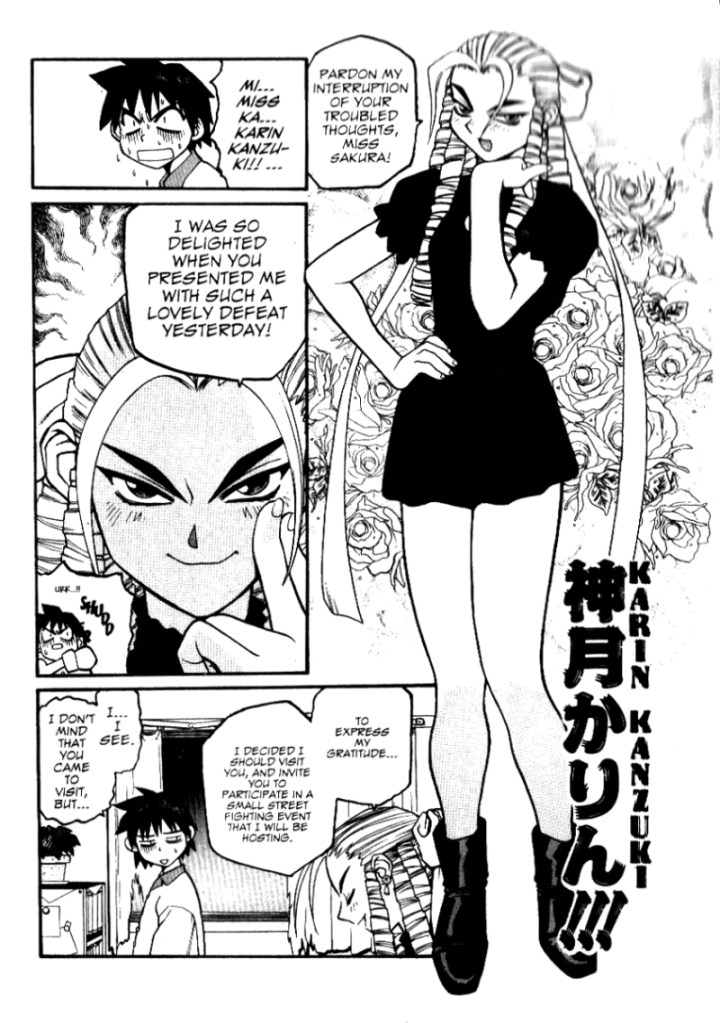
Speaking of Sakura, Masahiko Nakahira did another Street Fighter manga, this time centered around the plucky Ryu fangirl. Sakura Ganbaru, much like the Alpha manga with Evil Ryu, became an important footnote to Street Fighter lore due to the debut of Karin Kanzuki. Karin was brought in as the Ken to Sakura’s Ryu, albeit colder and more self-centered. Capcom definitely took to the design and Pinocchio’d her into being part of the series.
Fun fact: Karin’s first in-game appearance was supposed to be in Marvel Super Heroes vs. Street Fighter, but her sprite was merely left on the cutting room floor. Well, more specifically, in the game’s data.
Street Fighter Alpha 3
On June 29, 1998, Street Fighter Alpha 3 hit arcades. In a way, it felt unnecessary, as Capcom had already released a couple iterations of Street Fighter III. Why make more prequel games when the company’s learned to move forward? Regardless, it was a wonderful grand finale to the Alpha trilogy that kept getting bigger and bigger over time.
The gameplay allowed for different options, which were called “isms” and lent themselves really easily to juvenile punchlines. A-ism was the regular Street Fighter Alpha style, X-ism was like Super Street Fighter II: Turbo, and V-ism allowed for Custom Combos but no super moves.
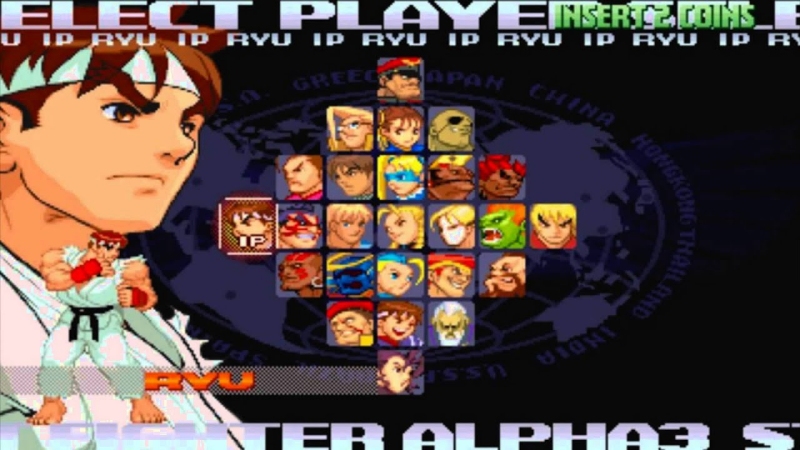
The roster from the previous games returned, as did Cammy. More Street Fighter II characters were thrown in there, such as Blanka, E. Honda, Balrog, and Vega. Nobody from the first Street Fighter this time around, but Final Fight was represented by Cody Travers. The hero character had fallen on hard times and became a bored convict who would go around getting into fights because it was the only thing that brought him anything close to happiness.
Karin Kanzuki was brought in, alongside the overly-eager joshi wrestler Rainbow Mika. Cammy was given two head-swap characters in Juli and Juni.
This time, instead of there being varying final bosses, everyone took on Bison for the final stage. Well, except Bison himself, as he fought Ryu. While the previous Alpha games refused to give Bison any real comeuppance due to prequel rules, they found a way around it this time while also explaining what Bison’s deal was outside of being evil and looking like the Fire Chief from Ren and Stimpy.
Bison has always refered to his blue flame energy as “Psycho Power,” which it turns out is weaponized bad vibes. Wanting to be the most powerful being in the world, Bison exorcised his body of all good so that he would be literally pure evil and better at wielding all that negative energy. That goodness survived in the form of Rose. In other words, Rose is like some kind of gender-swapped Bison clone made out of his disregarded behavior.
Video games, man.
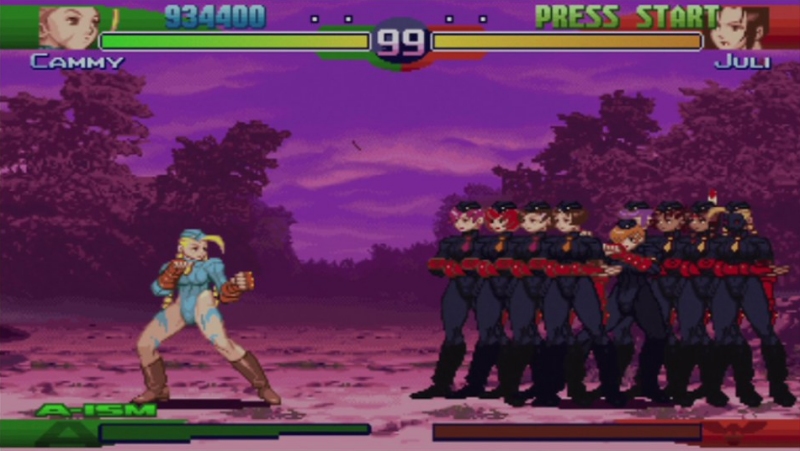
Speaking of which, Cammy is also his gender-swapped clone. Bison has an army of women called Dolls who are either clones or kidnapped/brainwashed women who have been genetically altered to be compatible with his DNA. The point of this is that Bison’s human form can die, but his soul can live on and possess a compatible body. Those vessels could take the form of Rose, Cammy, the Dolls, or just another clone body that his mad scientists come up with. That’s the in-game explanation for why his Street Fighter II appearance and powers are so different. Alpha Bison was so jacked because he was overdoing it on the Psycho Power and it was gradually overloading him.
Bison’s big plan was to capture Ryu, pump him up with Psycho Power, turn him into Evil Ryu, then either use him to power up his weapons of mass destruction or simply use Ryu’s body as a vessel. Finally, the two big storylines of the Alpha games came together. It’s even canon that Ryu was able to overcome the situation thanks to the help of Sagat, who realized the folly of his ways and came out of it as Ryu’s friend. No longer was their rivalry one of negativity, but positivity.
The funny thing in all of this is that the Alpha games were so good at fitting as a prologue to Street Fighter II without altering that game’s events…up until the end. Now Sagat’s role as Bison’s second-in-command during Street Fighter II is retconned away thanks to his character development in the Alpha games.
Within the year, the game was released for the PlayStation and not only had a bunch of sweet one-player stuff, but it also added even more fighters. Dee Jay, Thunder Hawk, Fei Long, and the long-awaited return of Guile meant that the entire Street Fighter II cast was finally available in Alpha form.
The Animated Movies
In 1999 and 2005 respectively, two animated movies were made bearing the Street Fighter Alpha name. Street Fighter Alpha: The Animation had little to do with the games’ story and had more focus on a boy claiming to be Ryu’s brother, as well as some original villains. It at the very least featured various Alpha characters for a short stretch of the movie, such as Birdie, Dan, and Adon. The other movie, Street Fighter Alpha: Generations, focused on Akuma’s fall from grace and eventual rivalry with Ryu.
The two movies had no connection to each other, but it’s funny how they played with the same base concept. Street Fighter Alpha: The Animation brought up the possibility that Ryu was Akuma’s son, only to walk it back as a red herring. Street Fighter Alpha: Generations was more blatant about the same idea because Street Fighter isn’t Star Wars enough as it is. Personally, I’m more into the idea presented in UDON’s Akuma origin comic where Akuma, Ryu, and their fathers were stuck in a seemingly endless cycle of vengeance and it’s up to Ryu to break the chain.
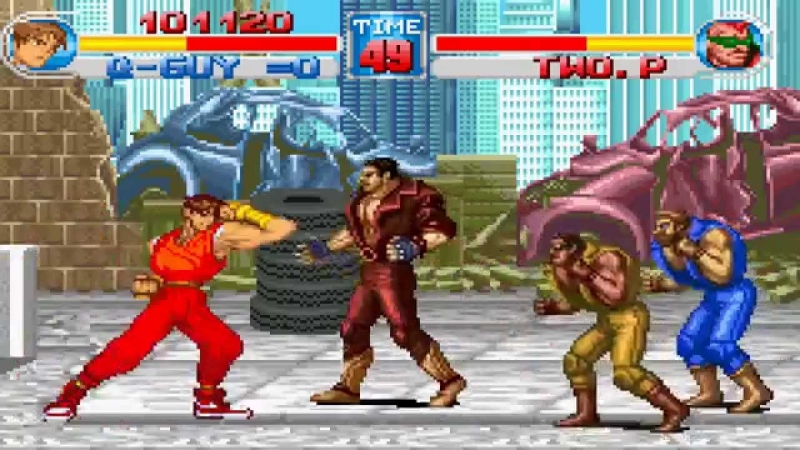
Street Fighter Alpha 3 continued to stretch its existence due to Capcom’s zest for reusing assets as much as possible. Much like the Alpha sprites were used for Street Fighter vs. X-Men, those sprites continued to get use in that series up until Marvel vs. Capcom 2 in 2000. Final Fight One was released for the Game Boy Advance in 2001, which had unlockable Alpha versions of Guy and Cody to use. Bigger yet, in 2000 and 2001, Capcom put together Capcom vs. SNK and its sequel.
While Capcom vs. SNK was about redrawing SNK characters in the Capcom style and reusing old Alpha sprites for most of the Street Fighter cast, Capcom vs. SNK 2 started adding more fresh faces to the Capcom side. Eagle from the first Street Fighter, Maki from Final Fight 2, Yun from Street Fighter III, and Kyosuke from Rival Schools were redrawn in a style compatible to the Alpha cast.
Seeing the possibility of getting more bang for that buck, Street Fighter Alpha 3 Upper was released on the Game Boy Advance in 2002. This time, Eagle, Maki, and Yun were added to the game. Not really sure why Kyosuke didn’t make the cut, but whatever.
Even More Crossovers
With their SNK alliance done with, Capcom decided to recreate the same crossover magic with themselves by releasing Capcom Fighting Evolution in 2004. The game was a total garbage fire of lazy asset recycling, featuring characters representing various Capcom fighters while being locked into the gameplay styles of said games. While it featured characters from Darkstalkers and Red Earth, it also meant throwing the beautifully detailed sprites from Street Fighter III up against various Alpha sprites, which was an eyesore.
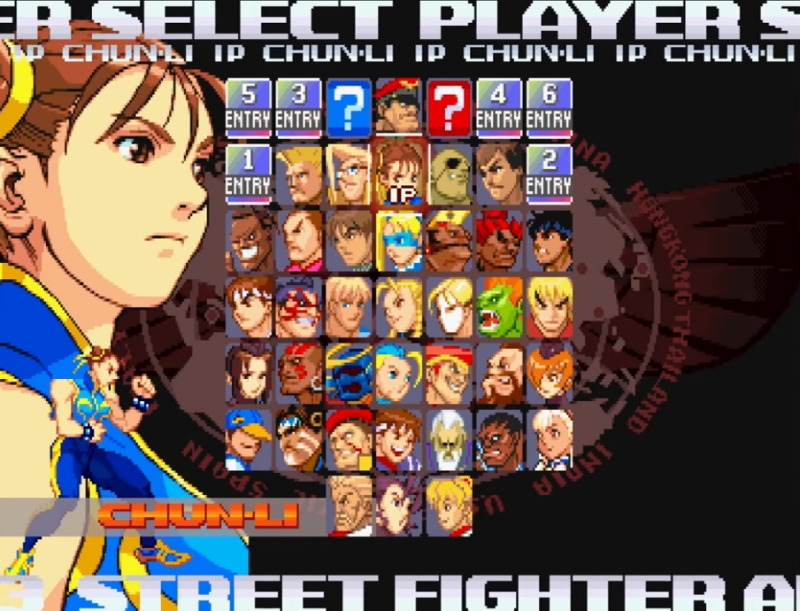
The game featured only one original character with her own set of sprites in Ingrid. While she didn’t exactly set the world on fire in any way, Capcom reused her sprites when releasing Street Fighter Alpha 3 MAX on the PSP in 2006. 11 years after its introduction, Street Fighter Alpha had reached its final form.
The same year gave us the Street Fighter Alpha Anthology for the PlayStation 2, which featured the core three games, Street Fighter Alpha 2 Gold, Street Fighter Alpha 3 Upper, the versus/training mode-only game Hyper Street Fighter Alpha, and the goofy and cartoonish Super Gem Fighter Mini Mix.
That was the last hurrah for Capcom’s main thrust in 2D. Street Fighter IV came out a couple years later and their world was all polygons. While Street Fighter III is moderately neglected and the first Street Fighter is the red-headed stepchild, Street Fighter Alpha has shined strongly after the fact. At this point, between Street Fighter IV and Street Fighter V, everyone from the core Alpha games has been revised and modernized.
All except Sodom.
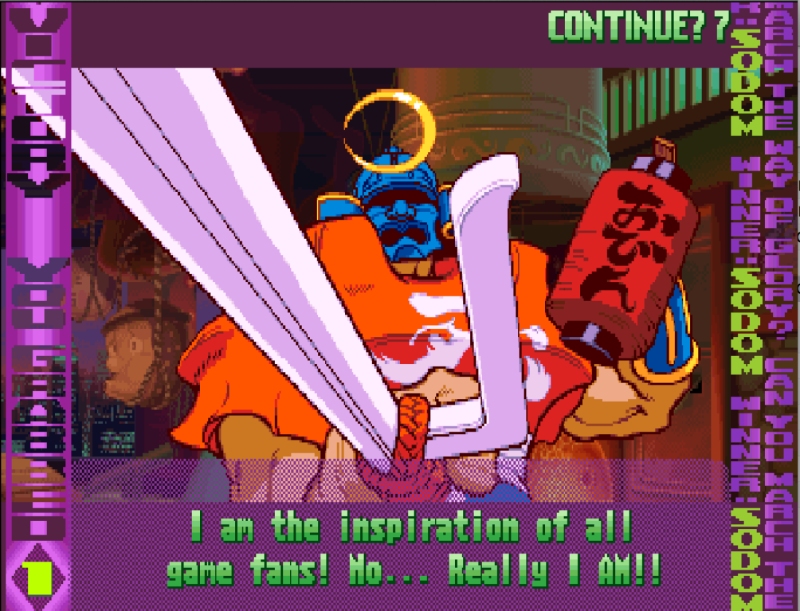
Don’t worry, Sodom. I still like you, you big weeaboo dope.
